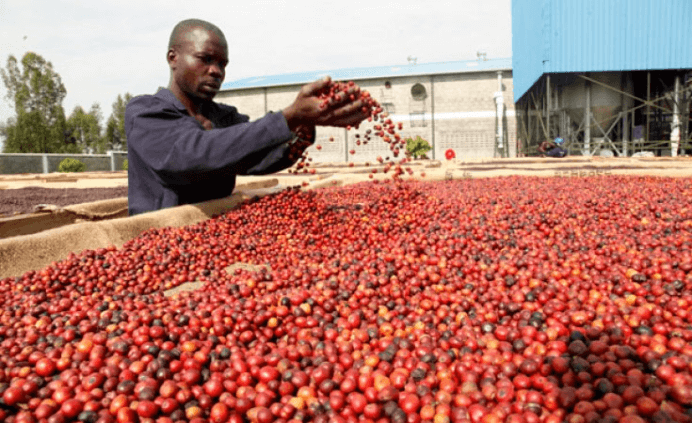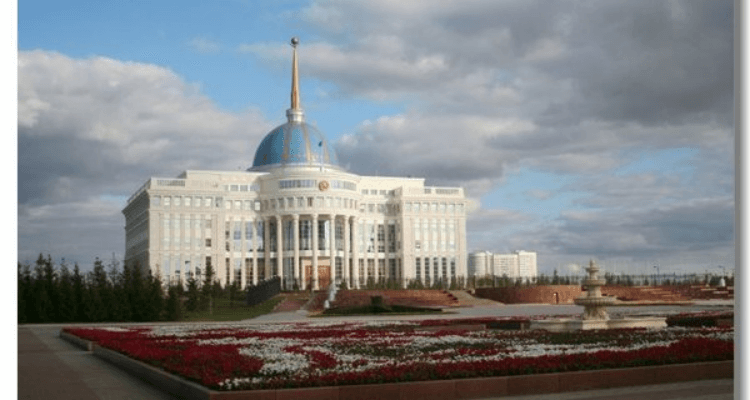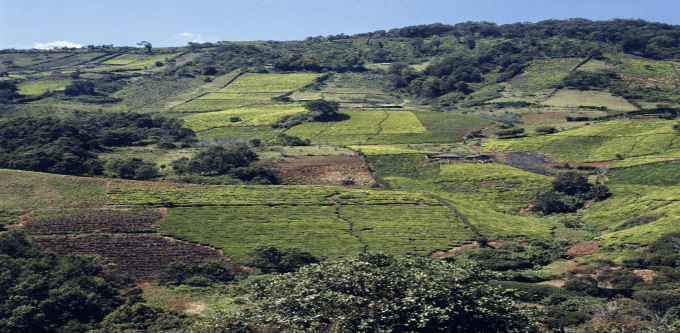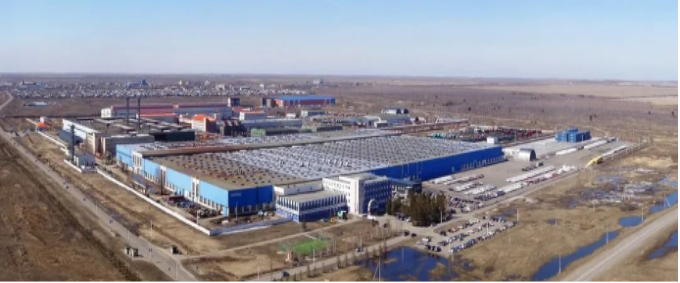

Investment Report on the Automobile Manufacturing Industry in Kazakhstan 2025-2028
Investment Report on the Automobile Manufacturing Industry in Kazakhstan 2025-2028
Golden Compass Go-Global Consulting

Special Statement
Each report embodies the professional judgment and rigorous verification of the analysts. This sample is for reference only. Please refer to the final approved version.
Report Price: 9800 yuan
|
service quotation |
Notes |
||
|
Standard Version |
Standard report module and data summary. It is suitable for small and medium-sized enterprises and individual business owners. |
9800 ¥ |
|
|
Partial customization |
Industry overview analysis, risk assessment, partial customization (2 persons * 2 weeks) |
(Industry/Country) 98,000+ |
No travel expenses included. |
|
Consult for customization |
Customized consulting for enterprise investment in a certain country's industry, including in-depth research, production analysis, and action plan (3 people * 4 weeks) |
(Industry/Country) 450,000+ |
Include travel expenses |
Industry Summary
Industrial Status and Scale
Output Value and Quantity: In 2024, the total automobile production in Kazakhstan was 147,431 vehicles, with a total output value of 1.9 trillion tenge (approximately US$4.1 billion), a year-on-year decrease of 1.6%. However, it still accounted for 41% of the total output value of the machinery manufacturing industry, serving as the core driving force of the country's industry.
Market Structure: Passenger cars accounted for 90.8% (133,978 vehicles), while trucks and buses accounted for 5.2% and 2.0% respectively. The main factories include the Allur factory in Kostanay (with an annual output of 90,515 vehicles) and the Hyundai factory in Almaty (producing 45,410 passenger vehicles).
Investment Value and Returns
Investment Growth: In 2024, the investment in the automobile industry reached 189.8 billion tenge (approximately US$410 million), a year-on-year increase of 475.2%. It was mainly used for the construction of new factories (such as the joint-venture auto parts factory in the Almaty Industrial Park) and technological upgrades.
Earnings Potential: The sales volume of JAC Motors in Kazakhstan exceeded 10,000 units. It is expected that the automobile market will grow by 10% annually in the next five years, and the policy dividends for new energy vehicles will be further released.
Supporting Industrial Chain
Localization Shortcomings: The domestic auto parts manufacturing industry is still in its infancy. In 2021, the import value of auto parts reached US$2.5 billion, mainly relying on imports from China, South Korea, and other countries. Tires, engine parts, and electronic systems accounted for 60% of the total import value.
New Layout: In 2024, the joint-venture production of auto parts was launched in the Almaty Industrial Park, and a new tire factory was built in the city of Saryarka, gradually improving the supply chain.
Competition Pattern and Market Concentration
Brand Competition: In 2024, the top five brands in the passenger car market share were Hyundai (23.8%), Chevrolet (13%), Kia (10.6%), Chery (7.5%), and JAC (7.3%).
Commercial Vehicle Exports: Kazakhstan is a hub for the supply of commercial vehicles to Russia and the five Central Asian countries. In 2024, China exported 172,000 commercial vehicles to Russia and Central Asia, accounting for 17.5% of China's total commercial vehicle exports.
Infrastructure and Policy Support
Geographical Advantage: As a transportation hub in Central Asia, Kazakhstan can radiate the markets of Russia and Central Asia, with well-developed cross-border transportation routes.
Favorable Policies: The mutual visa exemption between China and Kazakhstan, the government's car purchase subsidies, and green travel policies have promoted market growth. For example, Hyundai Motor established an assembly plant in Astana and enjoyed tax preferences.
Related Enterprises
Astanamotors
Basic Information: The largest automobile trader in Kazakhstan.
Production Situation: It has signed production agreements with Chery Automobile, Changan International Corporation, and Great Wall Motor, and plans to start production in the Almaty Industrial Zone in 2025, with an annual production capacity of 90,000 vehicles.
Hyundai Trans Almaty Automobile Company
Basic Information: A subsidiary of Astanamotors, which opened in 2011.
Production Situation: It produces commercial vehicles based on Hyundai Motor. In 2019, it became the official dealer of King Long buses, and in 2020, it became the production and sales agent of Foton trucks.
Economic Contribution and Employment Absorption
GDP Contribution: From January to August 2024, Kazakhstan's economy grew by 3.7%, and the growth rates in automobile-related fields such as construction (8.8%) and transportation (7.9%) were significant.
Employment Drive: The automobile manufacturing and supporting industries (such as logistics and maintenance) have absorbed a large number of labor forces, but the specific data has not been disclosed.
Development Trends and Opportunities
New Energy Transformation: It is expected that the scale of Kazakhstan's auto parts market will reach US$3 billion in 2025, and the demand for electric vehicles will gradually increase with policy support. Enterprises such as JAC plan to launch new energy vehicle models.
Export Potential: The demand for commercial vehicles (such as heavy trucks and engineering vehicles) is strong. Chinese brands are accelerating their layout through exhibitions (such as Automechanika Astana).
Challenges and Risks
Supply Chain Risks: High logistics costs and reliance on imported parts lead to fluctuations in production costs.
International Competition: International brands such as Bosch and Denso are seizing market share, and domestic enterprises face technological gaps.
Geopolitical Risks: Conflicts such as the Russia-Ukraine conflict may affect the stability of trade in Central Asia.
Investment Recommendations
Key Areas: New energy vehicles, commercial vehicle exports, and localized parts production.
Risk Avoidance: Select enterprises with cost control capabilities (such as JAC) and pay attention to policy orientations (such as green subsidies).
Conclusion
The automobile industry in Kazakhstan occupies a strategic position in the Central Asian market. Despite facing supply chain and competition pressures, relying on policy support, geographical advantages, and opportunities for new energy transformation, it has significant long-term investment value. Investors need to pay attention to the layout of localized production and the expansion of export markets, while remaining vigilant against geopolitical and cost fluctuation risks.For further details, please refer to the latest industry report from Golden Compass Go-Global Consulting.
Table of Contents
Introduction
1.1 Research Background and Significance
1.2 Research Methods and Data Sources
1.3 Report Structure and Main Content Overview
Macroeconomic Environment Analysis of the Automobile Manufacturing Industry in Kazakhstan
2.1 Political Environment
2.2 Economic Environment
2.3 Social Environment
2.4 Technological Environment
Current Situation of the Automobile Manufacturing Industry in Kazakhstan
3.1 Industrial Development History
3.2 Industrial Scale and Structure
3.3 Analysis of Main Enterprises
Market Analysis of the Automobile Manufacturing Industry in Kazakhstan
4.1 Domestic Market Demand
4.2 Analysis of Import and Export Markets
4.3 Market Competition Pattern
Investment Opportunities in the Automobile Manufacturing Industry of Kazakhstan
5.1 New Energy Vehicle Field
5.2 Auto Parts Manufacturing Field
5.3 Automobile Aftermarket Service Field
Investment Risks in the Automobile Manufacturing Industry of Kazakhstan
6.1 Policy Risks
6.2 Economic Risks
6.3 Market Risks
6.4 Social and Cultural Risks
Investment Case Analysis
7.1 Successful Investment Cases
7.2 Failed Investment Cases
7.3 Lessons and Enlightenments
Conclusions and Suggestions
8.1 Research Conclusions
8.2 Investment Suggestions
References
Literature and Materials Cited in This Report
 The Golden Compass is the preferred choice for going to sea!
The Golden Compass is the preferred choice for going to sea! 

 9800
9800 




